How NASA's new Orbiting Carbon Observatory will help us understand alien worlds
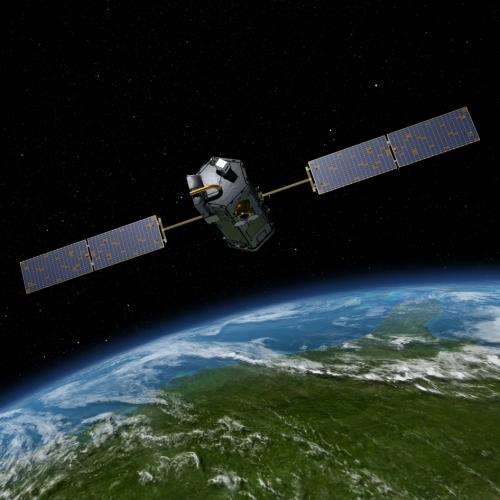
On July 2, NASA successfully launched the Orbiting Carbon Observatory-2 (OCO-2), a remote sensing satellite on a mission to precisely measure carbon dioxide levels in our planet's atmosphere. As a bonus OCO-2 will also help prepare us for eventually probing the atmospheres of alien worlds in sharper detail.
Why study carbon dioxide? This gas essentially serves as Earth's thermostat. As a "greenhouse gas," carbon dioxide absorbs radiation emitted by the planet's surface that would otherwise escape into space. The more carbon dioxide in the atmosphere, the warmer Earth gets.
Over geological history, carbon dioxide levels have waxed and waned, driving hotter and cooler climatic epochs. Occasionally, the scales have tipped too far in either direction, pushing life on Earth to the brink. The "snowball Earth" period of 650 million years ago and the hot-tub tropical waters of the early Triassic period are just two examples.
Usually, life and the planet itself work together to moderate the carbon dioxide swings and their attendant climatic extremes. Carbon dioxide naturally ends up in the atmosphere when it's released by forest fires, volcanoes, decaying organic matter, and other sources. Plants, rocks and the oceans—dubbed "sinks"—absorb a comparable amount of this released gas, maintaining a carbon balance.
OCO-2′s mission is to learn more about the Earth's cycle of inhaling and exhaling carbon dioxide.
"We're basically watching the Earth breathe," said David Crisp, OCO-2′s science team leader at NASA's Jet Propulsion Laboratory in Pasadena, Calif.
As an atmospheric physicist, Crisp also has astrobiology bona fides as a member of the NASA Astrobiology Institute's Virtual Planet Laboratory at the University of Washington.
Something in the air
Scientists want a better gauge on atmospheric carbon dioxide because of the threat of manmade climate change. Since the dawn of the Industrial Age, circa 250 years ago, human activity has jacked up Earth's atmospheric carbon dioxide content from 280 parts per million (ppm) to more than 400 ppm today. Global temperature increases have followed. At the current pace of carbon dioxide buildup in the atmosphere, future warming could lead to sea level rises and other negative consequences over the next century.
"We know carbon dioxide has been building up very rapidly in the atmosphere, primarily due to human activity," said Crisp. "We're dumping 40 billion tons of carbon dioxide into the atmosphere every year, and that's increased by a factor of three since the first precise atmospheric measurements [of the gas] were made in 1958—it's an alarming rate."
Interestingly, some part of the Earth, perhaps the oceans or forests, is soaking up more carbon dioxide than would be expected.
"Over half of all the carbon dioxide being put into the atmosphere from human activities every year is disappearing somewhere," said Crisp. "This has been a puzzle and is a big reason why we started the OCO mission."
(The original OCO mission was launched in 2009 but failed to reach orbit due to a launch vehicle malfunction. OCO-2 is a nearly identical "sequel" mission, or a "carbon copy," pun intended.)
Extreme precision
OCO-2 will hunt for the mysterious sinks where carbon is being snatched from the atmosphere and packed away on Earth. To do so, OCO-2 will make space-based measurements of carbon dioxide that will be far more precise and comprehensive than data gathered to date. Much of our prior carbon dioxide distribution data, going back decades, comes from a sparse network of 100-plus ground stations. A Japanese satellite, the Greenhouse Gases Observing Satellite (GOSAT), which launched in 2009, has aided global coverage considerably. But OCO-2 will make approximately 100 times more measurements than GOSAT by collecting 24 samples per second, instead of the latter's one sample per every four seconds.
OCO-2′s precision is similarly groundbreaking. The satellite will be able to measure the carbon dioxide concentration in the atmosphere with a precision of about 0.25 percent.
"That's a very tiny signal, but it's what we need to detect the sources and the sinks, the natural processes that are absorbing carbon dioxide at the surface," said Crisp.
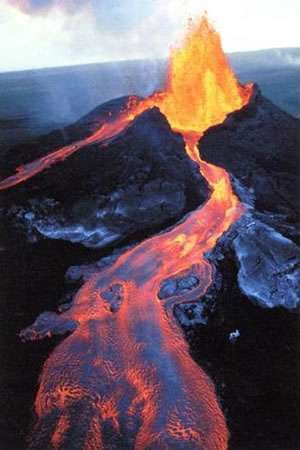
The satellite makes these measurements with three high-resolution spectrometers. These instruments gauge the amount of reflected sunlight that carbon dioxide and oxygen molecules in the atmosphere absorb. That absorption creates a signature, like a molecular fingerprint, in the light collected by OCO-2. The ratio of carbon dioxide to oxygen reveals the atmospheric carbon dioxide concentration.
Seeking tiny clues
High precision spectrometers are exactly what astrobiologists will need in the near future as they try to detect signs of life on exoplanets.
"OCO-2 is a huge step forward because it has one of the highest precision spectrometers ever flown in space, and that's exactly what we need for exoplanets as well," said Crisp.
The search for exo-planetary alien life over the next decade or two will probably be indirect. That is because exoplanets are simply too far away for even our next generation of telescopes to accurately "see" their surfaces to look for, say, patterns of vegetation or the artificial grid lines of an alien civilization's cities.
"You won't see little green men coming out of your measurements," Crisp joked.
Instead, we will have to rely on spectrometers to parse alien worlds' atmospheres. We will try to detect combinations and abundances of gases only producible, insofar as we know, by life.
"The main thing we're looking for are conditions that require some very unusual chemistry to occur," said Crisp.

Examples of astronomical biomarkers that are often cited include molecular oxygen and methane, because both are produced primarily by biological processes on Earth. Molecular oxygen results from photosynthesis, while methane is cranked out by bacteria found in swamps and in animal guts.
However, neither gas by itself is necessarily a biomarker, unless it is far out of chemical equilibrium with its environment. One biomarker example is the presence of significant amounts of molecular oxygen along with volcanic gases such as hydrogen sulfide or molecular hydrogen, which react strongly with oxygen, or along with evidence of active surface weathering, which takes oxygen out of the atmosphere. The presence of methane in an otherwise oxygen-rich environment would also constitute a biomarker.
Precious photons
OCO-2 is to a large extent an experiment in how to detect atmospheric trace gases, like carbon dioxide, with very high precision. Honing the ability to do so with Earth will point the way forward for extending such observations to exoplanets where we will truly be looking for a needle in a haystack.
The big challenge, of course, is that so little light from exoplanets reaches the vicinity of planet Earth. The light particles, called photons, have to travel a long road before pinging a mirror or detector in our telescopes. In addition, for the types of exoplanet observations that we can expect over the next decade or two, including planetary transits or partially resolved planetary disks, only a tiny fraction of the photons collected will have traversed the planet's atmosphere and recorded the spectral signature of its gases.
"These are precious photons—you can put a dollar value on each one," Crisp said.
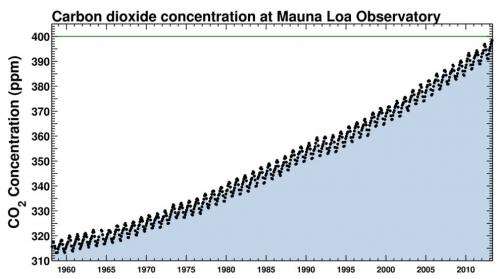
With so few photons to work with, none should go to waste. The development of OCO-2 has helped in this regard by expanding the range of photons that can be usefully studied. Rather than just monitoring gases in industry-standard infrared light, OCO-2 has pushed into higher frequencies of so-called near-infrared, which is closer to the visible light our eyes see. Crisp said the OCO-2 project has contributed to a "revolution in our understanding" of the absorption by atmospheric molecules in this part of the spectrum.
For future exoplanet study, performing similar measurements on wavelengths of visible and even ultraviolet light will enhance useful photon yields and the suite of molecular species and atmospheric properties that can be detected.
"We're making significant strides in the ability to analyze the data we're collecting from exoplanets," said Crisp
Takes one to know one
Another broader astrobiological benefit of OCO-2 and Earth science missions is establishing bases for comparison. Climate models of Earth have been enhanced by applying them to Mars and Venus, Earth's nearest neighbors in both planetary proximity and size. The physical processes included in these models have then been refined to account for these other realms' disparate climates.
"It's a two-way street," said Crisp. "We've learned so much about the physical processes operating on other planets here in our solar system by understanding those processes operating in Earth's atmosphere. And if the physics of my climate model have to cover all of this, from Venus to Earth to Mars, it will be a better model."
Knowing more about Earth, then, helps with knowing more about what's happening in another planet's atmosphere, and the other way around. In order to identify the indirect signs of life in other world's atmospheres, a firmer grasp on the intricacies of Earth's proxy gases will be essential.
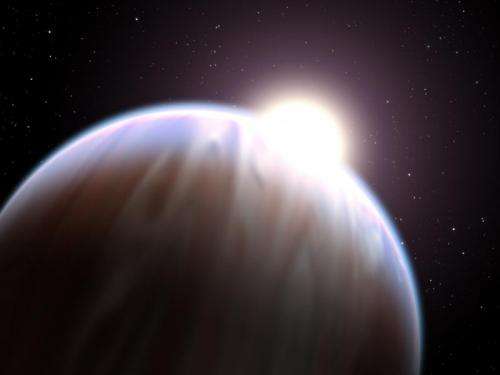
"'Know thyself'," said Crisp, quoting the ancient Greek aphorism, "but also know thy neighbors."
What OCO-2 says about Earth's carbon cycle will inform, and be informed by, parallel advances in exoplanet atmosphere investigation.
"We've got this whole new menagerie of planets and environments to study," said Crisp.
To date, our study of exoplanetary atmospheres has been largely confined to the most readily studied type of exoplanet, the hot Jupiter. These worlds, as their name implies, are big and gassy, and orbit very close to their stars. Accordingly, hot Jupiters offer up considerably more atmosphere-imprinted photons for us to capture and glean than cooler, comparatively poorly-lit and more distantly orbiting Earth-like worlds.
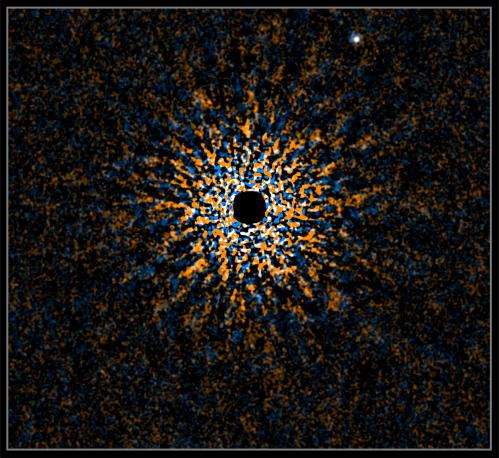
New telescopes, such as the James Webb Space Telescope, will bring such smaller quarry within spectroscopic reach. With continued developments along the path of OCO-2, we should be in a position to maximize our photonic harvest.
"The techniques we're developing are becoming good enough that hopefully we'll be able to start seeing exoplanet atmospheres in more detail," said Crisp. "These days, we're seeing hot Jupiters, but as we start seeing Earth-like exoplanet atmospheres, all this will become even more critical."
Source: Astrobio.net
This story is republished courtesy of NASA's Astrobiology Magazine. Explore the Earth and beyond at www.astrobio.net .




















